How an isolated island in Peru survived the pandemic – and plans to bring back tourists
Peru’s legend-filled and tourism-dependent Amantani island has big plans to bring in international visitors. Stephen K Hirst reports
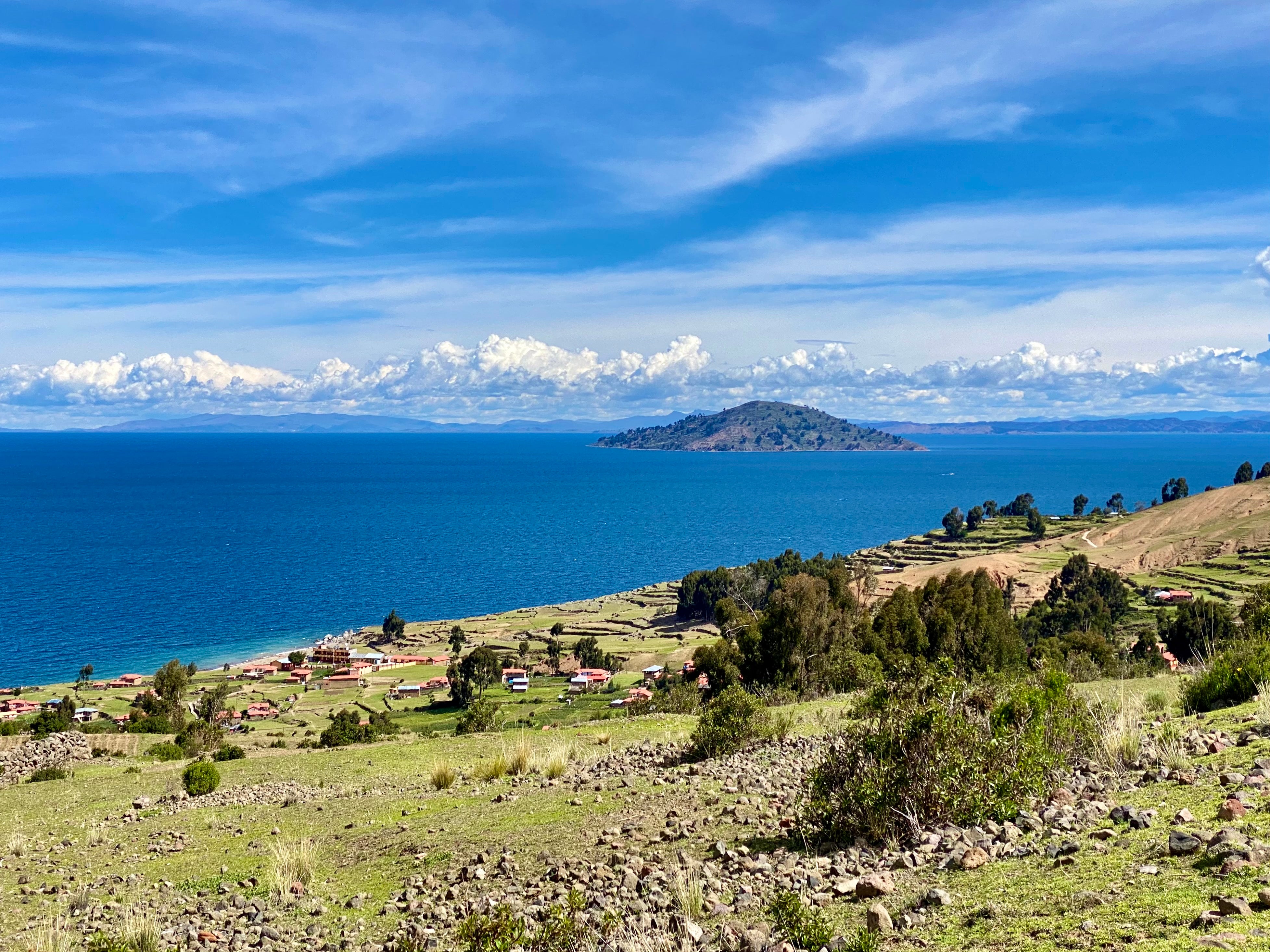
There’s an apocryphal story Abel Mamani Calsin likes to tell about a pair of visiting archaeologists to Amantani. Upon discovering a cave network beneath the island, they believed they were on the verge of a major discovery. But one night, they were visited by two spirits who communicated with them telepathically – warning them to stop digging, that humanity wasn’t prepared for what they were about to find. The archaeologists packed and left the next day.
I asked him about it.
“So telepathy, Like Professor X?”
“Exactamente.”
“So they were ghosts?”
“Mas o menos,” he says, meaning “more or less”.
“Or like aliens?”
“Mas o menos. O, visitantes otra-dimensional.”
“Visitors from another dimension?”
Calsin shrugs, and grins. “Amigo, mas o menos!”
Like all the islands on Lake Titicaca, which straddles Peru and Bolivia, Isla Amantani is thick with supernatural tales, mythology and folklore, and Calsin knows his share of them. The legends surrounding the world’s highest navigable lake are especially rich, and ruins from the Inca and Tiwanaku civilisations decorate the island’s peaks. Sunrise and sunset views from these temple ruins across the lake are an especially dramatic sight.
The Incas’s creation myth tells us that Manco Capac, the first Inca and an Arthurian-type figure in Peruvian culture, was born in the lake before he headed west to found his empire’s capital of Cusco. Others say the Inca deity Viracocha also emerged from its waters. The lake and surrounding area are big favourites of Ancient Aliens fans, partly due to some spectacular underwater ruins, as well as the numerous UFO sightings in the area.
While he loves to share stories about the local legends and extraterrestrial visitors, these days Calsin – an energetic 30-year-old who looks 25, with a quick smile, easy laugh, and an abiding love of dancing and coffee – is far more concerned with another kind of visitor: tourists.
The tourism-powered Peruvian economy has been battered by Covid-19, and government figures estimate that tourism for 2020 was down as much as 85 per cent. Amantani – a small island of roughly 4,000 on the Peruvian side of Lake Titicaca – has been hit as hard as anywhere else. About 75 per cent of residents host homestays for tourists, and from March until November 2020 the island was completely closed to tourists and non-residents.
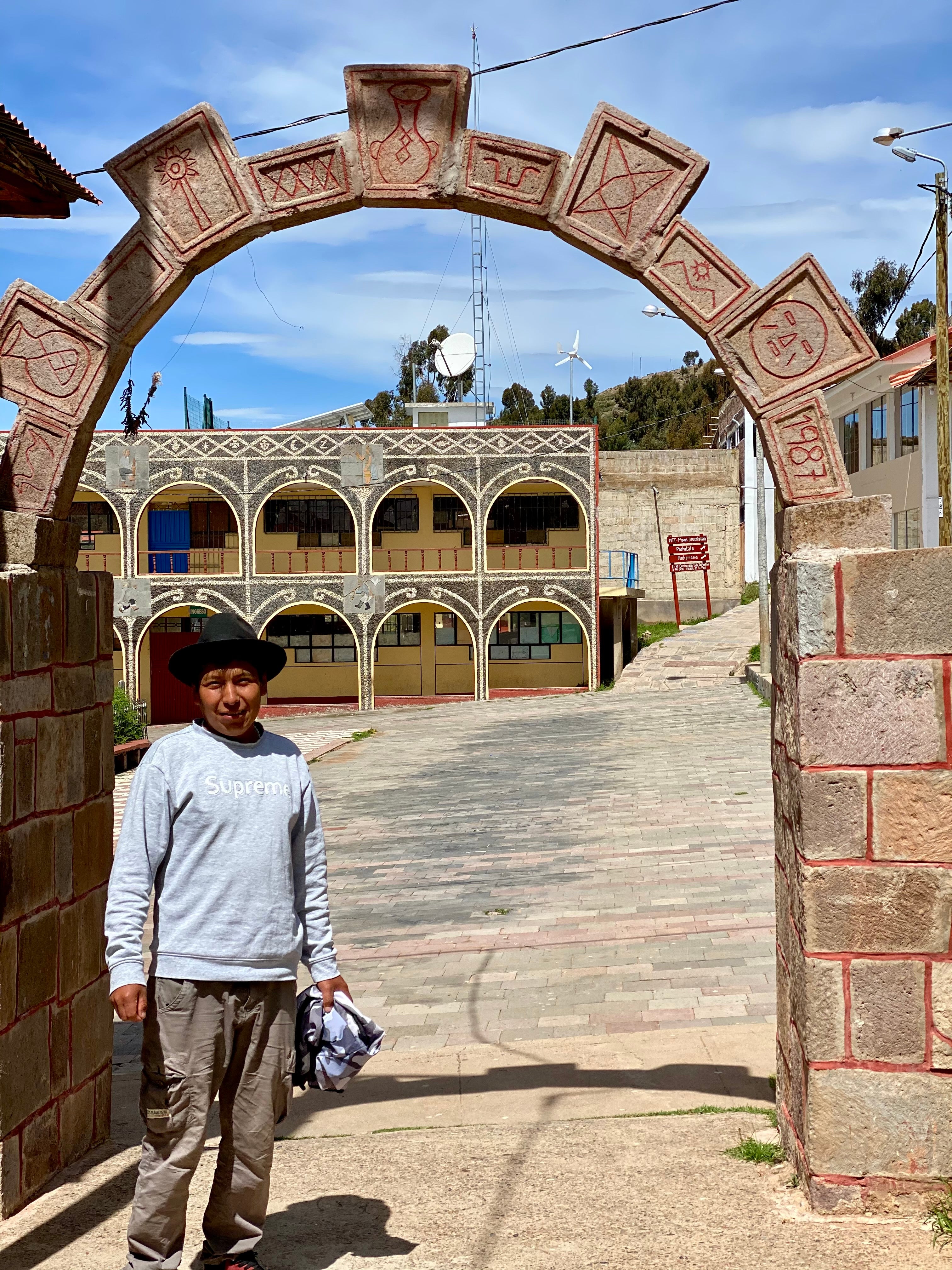
Two years ago, Calsin was elected to the position of tourism president for the island, in a surprising turn from tradition. The then-28-year-old was the youngest person to ever occupy the office.
“It was a little controversial, since I’m so young, and not married,” said Calsin, and he believes not having children could also have hurt him with some voters. Calsin believes this simply gives him more time to work.
On a typical day his responsibilities may include helping resolve disputes between islanders over farmland or property, running a show on the island’s radio station, and managing the flow of tourists so that each community shares the hosting duties and resulting income equitably. When we last spoke, he was excited about partnering with an NGO in Cusco to set up a library in each of Amantani’s 10 communities.
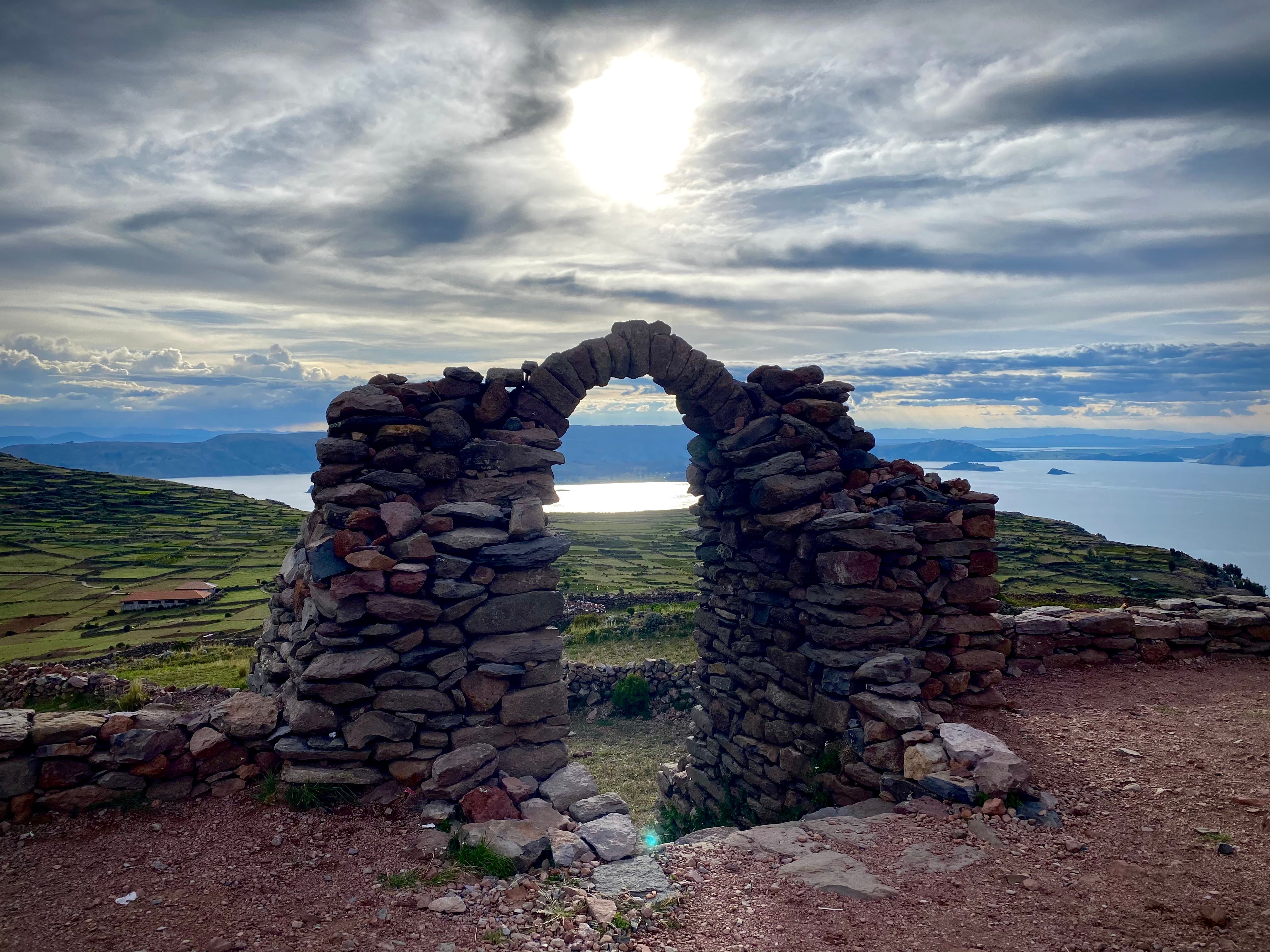
Amantani has seen some big changes lately – electricity came to the island in 2020 in the form of solar panels, the result of a central government program. Before that, the tourists staying overnight just lit candles like everyone else. Calsin has been trying to capitalise on the newfound availability of reliable electricity to improve the island’s infrastructure and homestays, making Amantani more accessible for tourists.
“We’re working on improving housing, and increasing the number of rooms that are amenable for tourists, while at the same time improving housing for residents, and training islanders to be compliant with Covid-19 regulations.”
On 16 March 2020, Amantani closed up with the rest of the nation, and residents isolated as much as possible. However, as there are no banks on the island and a negligible number of residents have bank accounts, some people still had to leave for the mainland to receive their “bono familiar” stipend from the government – which exposed the isolated island to risk.
Eventually, Calsin says that nearly 80 per cent of those tested were showing positive results. However, nobody felt ill. Nearly every case was entirely asymptomatic, leading a lot of islanders to mistrust the government. Many don’t believe the virus exists at all, which greatly complicates enforcing regulations for tourists as well as locals.
Another area Calsin is concentrating on is the island’s environmental practices, and to that end he’s introducing recycling and anti-littering campaigns. A current sustainability goal is “to institute a pack-it-in pack-it-out policy for tourists, to reduce trash on the island”.
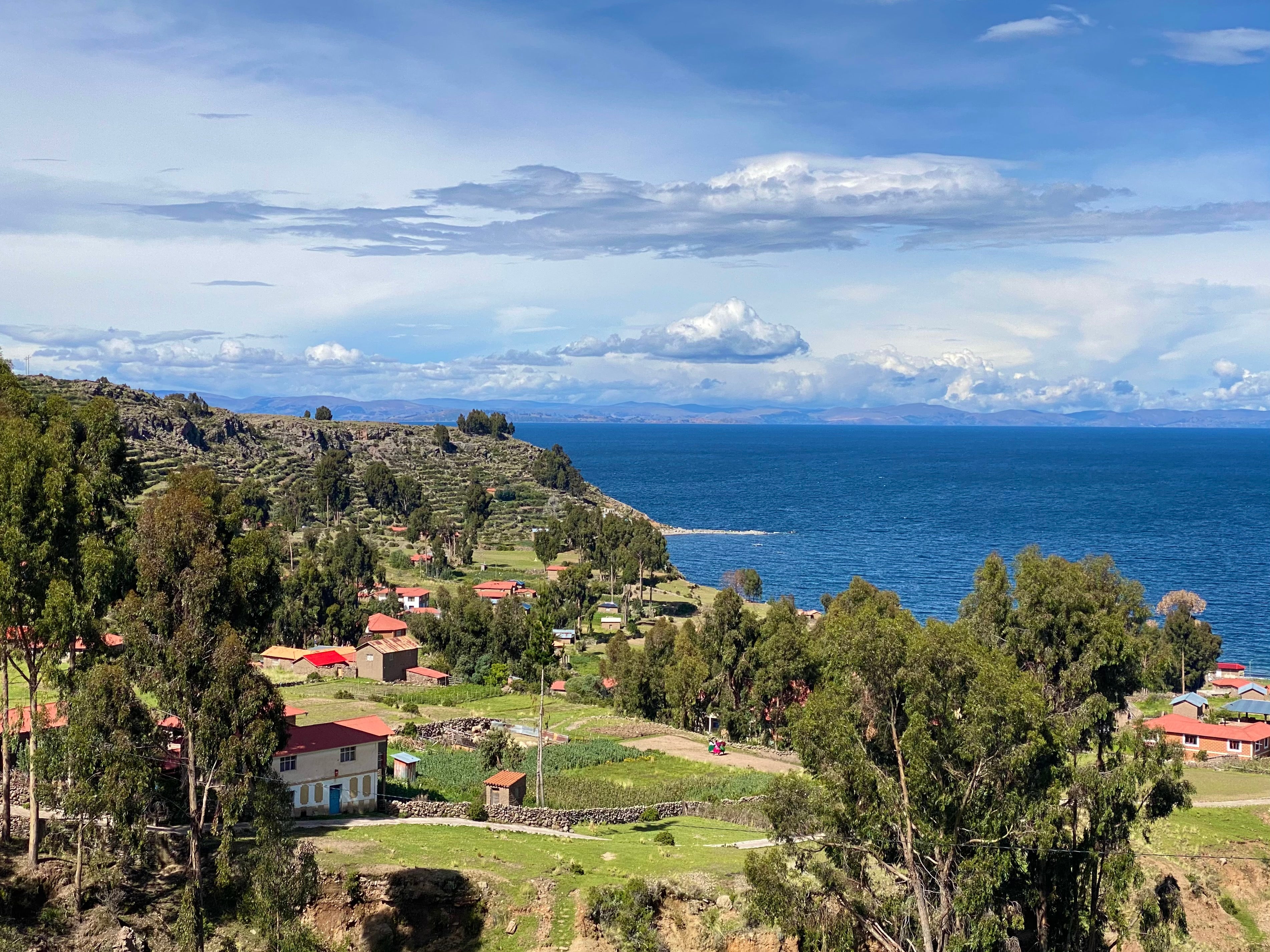
Amantani relies on tour agencies to book lodgings and visits for tours, and while they appreciate them, the eventual goal is “to create our own co-op and website, and not have to rely on travel agencies – get our own tourists, run our own show”, said Calsin.
While the majority of islanders do offer homestays (and, typically, a delicious quinoa soup with pan-seared trout), they still tend to their crops of potatoes, corn, wheat, beans and quinoa, go fishing, raise sheep, and go about life much as they have for generations. Residents have integrated their tourism duties with their traditional, everyday work. For example, there is exactly one cafe-bar on the island, and it opens at 1pm. In the morning, I saw the owner or barista carrying a huge bag of clippings on his back, strolling along one of the island’s walking paths to go and feed his sheep.
Amantani’s residents are Quechua, and islanders speak the language (and most of them Spanish as well), but many older residents also speak Aymara; before regular boats and sustained contact with the outside world, Aymara communities were their primary trading partners. Men here often wear dapper black suits, vests and hats, while both men and women wear iconic traditional hats signifying their marital status.
A native of Amantani, Calsin left as a teenager to go to Lima and work in tourism, as well as to help out an uncle with his fishing business. He ended up studying tourism in Lima as well, and stayed nearly a decade, before returning home when his grandmother died.
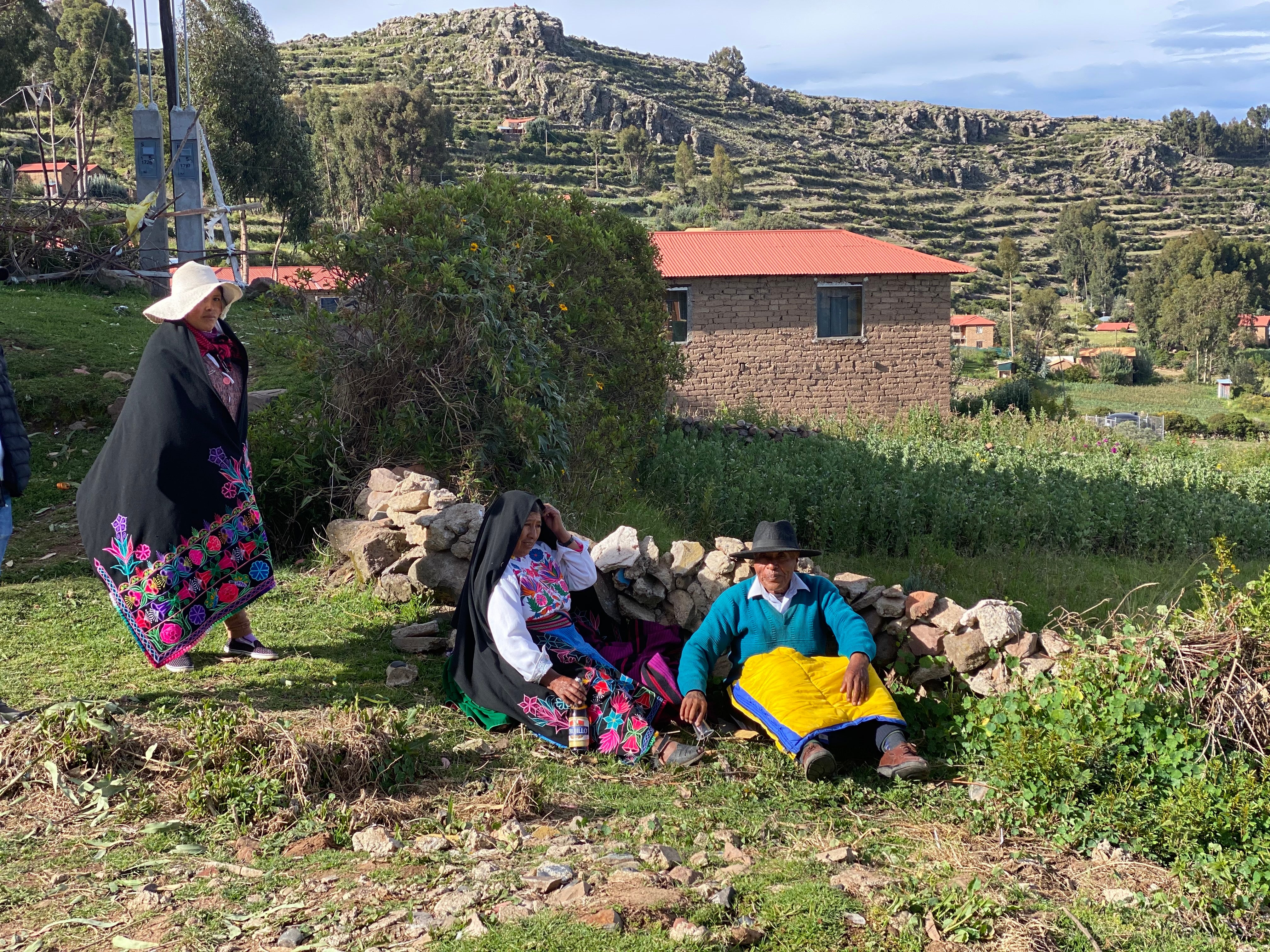
Initially intending to stay for only a month, Calsin realised his family needed him, and that he could help to improve life for the whole island if he won office.
Calsin was drawn back to the simple style of agricultural-based life. “Life is calm here, [there are no cars or dogs on Amantani, lending it a tranquility which is rare in much of Peru] but I also like that we have retained the traditional culture,” says Calsin. “When I go out, I call everyone ‘auntie’ and ‘uncle’, because everyone is family.”
While Peru vaccinates its population and slowly attempts to return to normal, some domestic tourists are beginning to move about the country, but there is no telling when the international crowds will be able to return – Covid-19 still rages in Lima and other areas, and neighboring countries are dealing with their own restrictions and related issues. But Calsin is preparing to meet the challenges, and isn’t going anywhere soon.
Many visitors are drawn to Amantani by its twin peaks of Pachatata (father sky) and Pachamama (mother earth), which offer stunning views of surrounding Lake Titicaca as well as both ancient Tiwanaku and Inca ruins. Calsin, too, feels the pull of Amantani’s archaeological sites.
“The temples at Pachamama and Pachatata, these are sacred sites, and Amantani is a deeply spiritual place,” said Calsin. Once a year, on the third Thursday in January, these temples are opened, and the islanders perform elaborate sacred ceremonies atop these hills. It’s easy to see why he feels such a deep connection to his island home.
“There are very rare energies on Amantani, around all of Lake Titicaca. And all of my ancestors are buried here – right in the centre of the island.”
Join our commenting forum
Join thought-provoking conversations, follow other Independent readers and see their replies
Comments